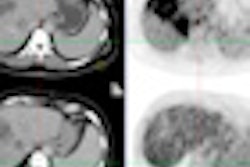Women diagnosed with ductal carcinoma in situ (DCIS) who have a lumpectomy face the lowest risk of cancer recurrence when enough breast tissue is resected to have a pathologically confirmed wide negative margin, according to an article published online March 22 in the Journal of the National Cancer Institute.
A meta-analysis of 30 years of peer-review literature showed that margin status is an important predictor of local recurrence regardless of subsequent radiotherapy treatments. Data revealed that the risk of ipsilateral breast tumor recurrence was lowered after breast conservation surgery if a 10-mm margin around the tumor resection had no cancer cells.
Dr. Shi-Yi Wang, a graduate student fellow at the University of Minnesota School of Public Health's Division of Health Policy and Management, led a team that evaluated the effectiveness of different margin widths (JNCI, March 22, 2012).
No consensus exists among breast surgeons about the optimum margin width for breast conservation surgery. Margin width represents a trade-off between a poor cosmetic outcome versus the risk of not resecting all cancer cells and a greater chance of recurrence.
The researchers identified 21 studies published in 24 articles, out of a total of 3,581 articles published in peer-review journals between January 1970 and July 2010. These studies covered the outcomes of 7,564 patients who had been followed for a median of 3.5 to 11 years.
In all, 1,066 patients, or 14% of the total, experienced an ipsilateral breast tumor recurrence. Patients who received radiation therapy had an 11.2% recurrence rate; those who only had surgery had an 18.2% recurrence rate.
The researchers identified that a negative margin 10 mm or larger led to lower recurrence rates, compared with a negative margin between 2 mm and 10 mm in width. "The results of this study suggest that 2 mm may not be an adequate threshold," they wrote.
Radiotherapy cannot be relied upon to mitigate the negative impact of positive margins, the authors stressed, and should be used to compliment the targeting of wider margins. "Given that breast conservation surgery is subject to cosmetic constraint and not all surgeries can guarantee 10-mm-free margins, radiotherapy should always be considered the top priority," they emphasized.
An accompanying editorial in JNCI questioned whether adopting a 1-cm margin was likely to benefit patients having breast conservation surgery. Breast surgeon and lead editorial author Dr. Monica Morrow, of Memorial Sloan-Kettering Cancer Center, pointed out that only five of the 21 studies evaluated reported margin widths of 1 cm or more, and she questioned the lack of specific data on the patients' cancers.
"There is no compelling evidence that bigger is better for margins in DCIS," the editorial noted. "The main topic of debate now is whether more widely clear margins of resection can eliminate the need for radiotherapy treatment."



















